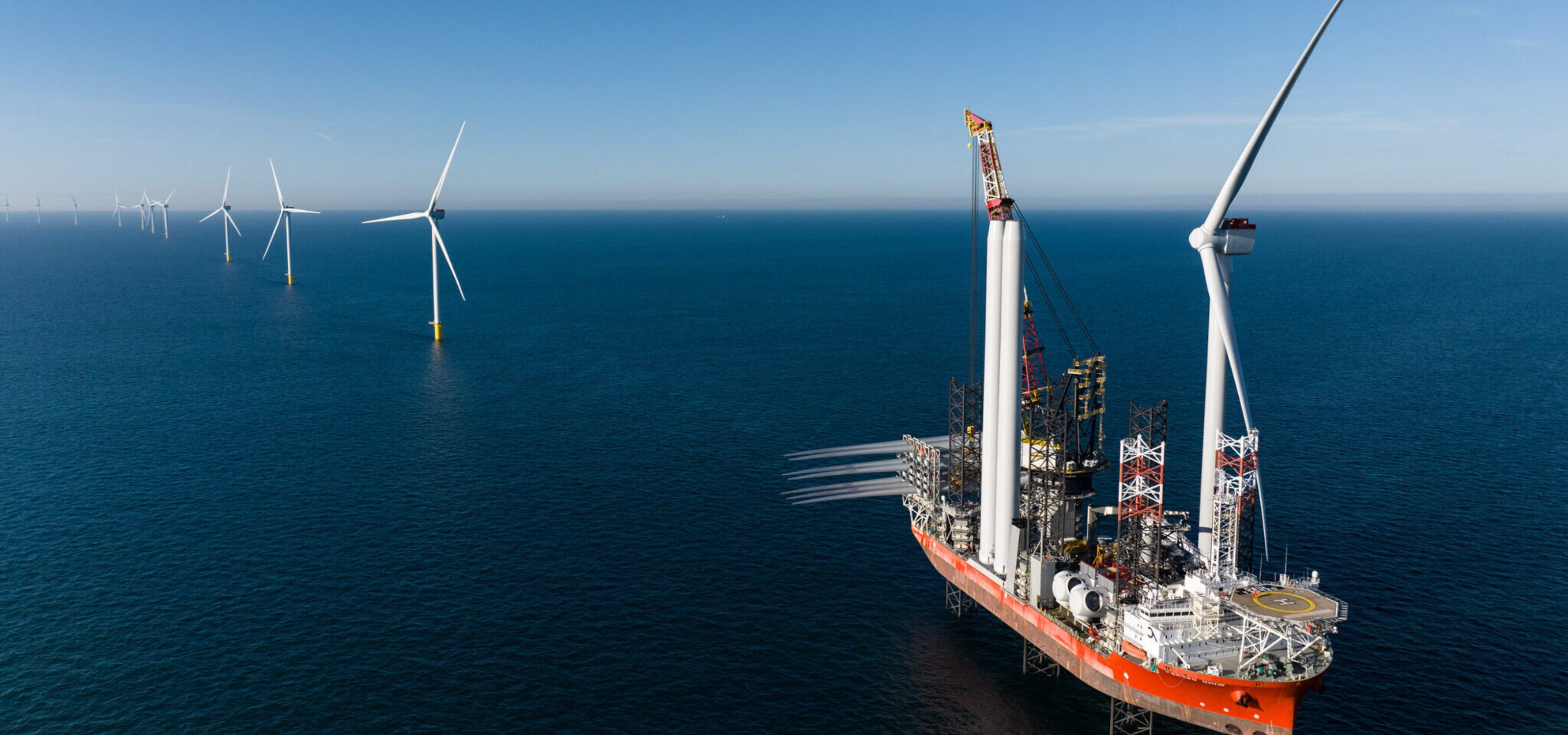
The wind park

Location
Powerful wind turbines
Timeline
Frequently asked questions
When a wind turbine extracts energy from the wind, it leaves a wake of lower wind speeds. This reduces the power of all other wind turbines. In other words: wind turbines capture each other's wind. This is known as the 'wake effect'. To a certain extent, we are already minimising this effect through the layout of the wind turbines in the wind farm.
An innovative solution is to control the wind turbines in a smart way by giving them a yaw error for certain wind directions. This slightly reduces the power of a single wind turbine, but a yawed rotor also pushes the wake away from the wind turbines that are downwind; this results in a higher total capacity. Together with TU Delft and its partners, we are looking at smart control technology based on real-time data to reduce the wake effect across the entire wind farm. This is one of the innovation projects that CrossWind is carrying out.
An offshore wind farm basically consists of five parts:
1. Sea cables that connect the wind turbines to each other and to TenneT's high-voltage grid. The Twentse Kabel Fabriek (TKF), based in Lochem, is supplying the sea cables for Hollandse Kust Noord.
2. The foundations of the wind turbines, which are anchored in the seabed. These foundations, also known as monopiles, consist of steel plates that have been rolled and welded together by Sif in Roermond and at the Maasvlakte in Rotterdam. In addition to the monopiles, other steel structures are also needed on the foundations to make them accessible for maintenance of the wind turbines. These constructions are made by Amicon in Sneek and Marketex in Estonia.
3. The grey-white towers that stand on the foundations and support the wind turbines are also made of welded steel plates. These towers are manufactured in Denmark by Welcon, a sub-supplier of Siemens Gamesa Renewables.
The nacelles are supplied by Siemens Gamesa Renewables. These nacelles are made of various materials that are brought from all over the world to Cuxhaven in Germany for assembly of the nacelle there.
4. The blades of the wind turbine are mainly made of fiberglass, balsa wood and epoxy, which as a whole is strong enough to transfer the wind forces to the nacelle. These blades are produced by Siemens Gamesa Renewables in Aalborg, Denmark.

